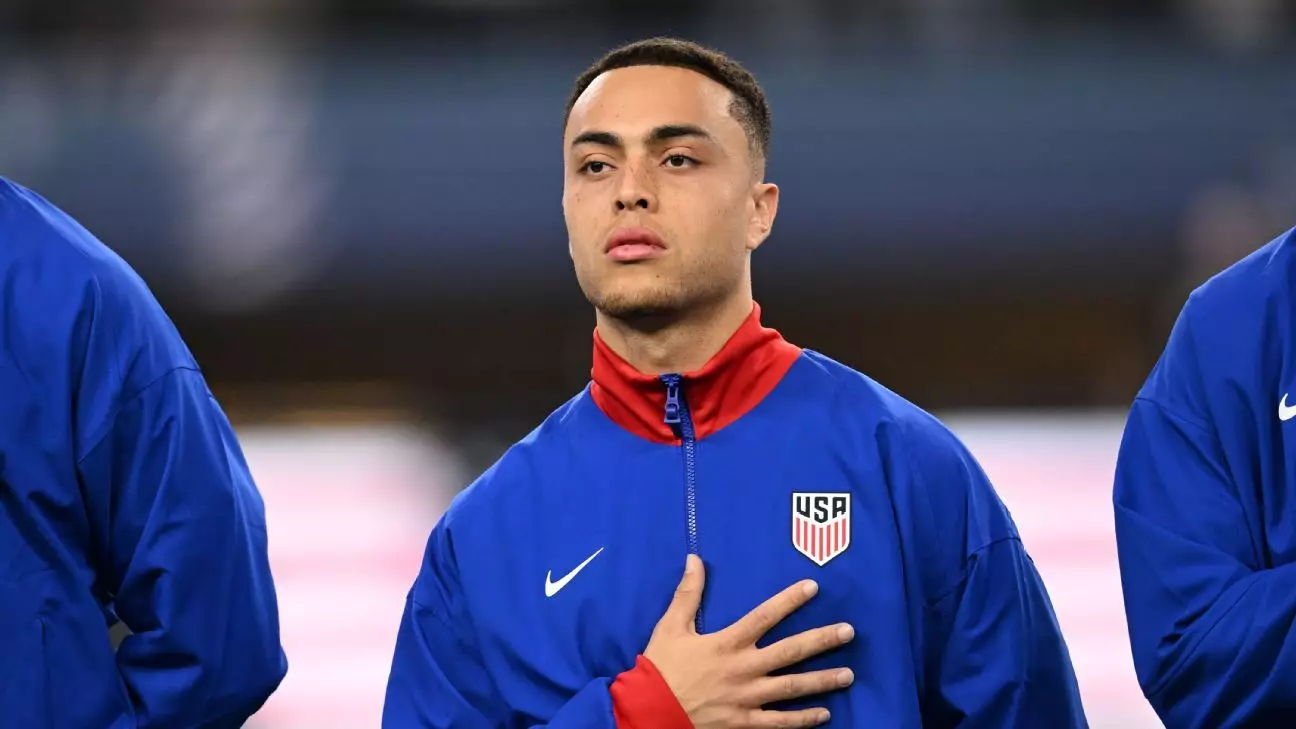The U.S. Men’s National Team (USMNT) is currently navigating a turbulent period as they prepare for the upcoming Concacaf Gold Cup. The latest twist in the narrative is the withdrawal of international defender Sergiño Dest, a blow that signals deeper issues facing the squad. Head coach Mauricio Pochettino has unveiled a 26-player roster with heavy hearts, as notable absences from the lineup include not just Dest but also AC Milan’s Christian Pulisic, Fulham’s Antonee Robinson, and Juventus players Weston McKennie and Tim Weah. Their departures raise significant questions about the team’s depth and competitive spirit.
Dest’s situation is particularly poignant. After a challenging recovery from a torn ACL that limited his appearances last season, his reassignment to individualized training instead of tournament play reflects a forward-thinking approach to player development. Pochettino’s rationale underscores the importance of long-term player health over short-term gains. One can’t help but wonder if this approach is the best path considering the immediate need for proven talent on the field, particularly in a pressure cooker environment like the Gold Cup.
The Emerging Players: A New Era?
With several experienced players sidelined, Pochettino has turned to fresh blood to fill the gaps. Holstein Kiel defender John Tolkin steps into Dest’s spot, while promising players like Alex Freeman, Quinn Sullivan, and Sebastian Berhalter earn their first call-ups to the senior squad. It is an exciting yet unpredictable time for the USMNT as they strive for excellence while relying on less experienced players. Will these newcomers rise to the occasion or crumble under pressure?
Among the highlights of the roster is the Aaronson brothers duo—Brenden and Paxten—who have the chance to create their legacy, becoming the first set of brothers to share a Gold Cup roster. Their potential to make history as the second pair of siblings to take to the field together in an official capacity adds an intriguing storyline to the tournament. It raises hopes of fostering chemistry on the pitch, while also invoking nostalgia for fans who remember the only prior instance involving the Murphy brothers in the 1950s.
Preparing for Glory: The Road Ahead
As USMNT gears up for the Gold Cup, their journey starts with friendly matches against Turkey and Switzerland. These encounters serve a dual purpose: providing tactical preparation and allowing for the assessment of newer players in high-stakes situations. A focus on the mental aspect of the game will be essential for success, especially given the youth populating the roster.
Pochettino’s excitement is palpable, as he aims to channel the enthusiasm of the young squad into a competitive spirit. “We are extremely excited to work with this group of players and compete for the championship,” he asserted confidently. Yet, while his words reflect optimism, the question remains: Is this youthful exuberance enough to outmatch seasoned teams with robust histories in international competitions?
The Shadows of Barriers: Injuries and Setbacks
Injuries have played a large role in shaping the final roster, and the absence of key players like Patrick Schulte, Zach Steffen, Sean Zawadzki, DeJuan Jones, and Folarin Balogun creates an undeniable sense of urgency for Pochettino. The introduction of less familiar names certainly introduces a learning curve, requiring quick adjustments and cohesive gameplay dynamics.
There’s a fine line between seizing the moment and overwhelming these young talents with expectations. Pochettino must navigate the unpredictable waters of team chemistry while aiming for on-field results that both satisfy fans and foster long-term growth. The stakes have never been higher, as the pressures of international competition threaten to expose vulnerabilities within the squad.
As kickoff approaches against Trinidad and Tobago, it becomes abundantly clear that the USMNT is at a crossroads. The combination of existing talent paired with burgeoning newcomers presents both opportunities and challenges. What emerges from this transition will prove pivotal, building not just towards the upcoming tournament but perhaps laying the groundwork for the future of U.S. soccer.

